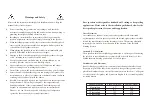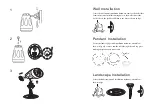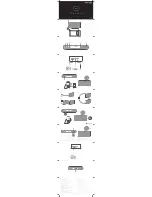
Wire Gauge and Quality
The total wire resistance should be less than 10% of the speaker
impedance. If
using an 8 ohm speaker, your total wire resistance should be
no more than 8 ohms.
In simple terms, the extra resistance from the wire
will have a very negative
effect on the sound quality of the speaker. The
sound can be less dynamic, definition of bass frequencies can be reduced,
an in extreme cases, the high frequencies can be attenuated. Amplifier
power is also wasted in the wire, reducing the maximum output level of
the system.
Please refer to the following chart when deciding on the
appropriate wire gauge.
Distance in Feet
20 gauge
18 gauge
16 gauge
14 gauge
12 gauge
10 gauge
50’
100’
150’
200’
250’
300’
Wire resistance in ohms vs. Length of cable run
.86
1.73
2.59
3.45
4.32
5.18
.65
1.30
1.94
2.59
3.24
3.89
.43
.85
1.28
1.71
2.14
2.56
.27
.54
.81
1.08
1.35
1.62
.17
.34
.51
.68
.85
1.02
.11
.22
.33
.44
.56
.67
Transformer settings
Depending on the customer needs you may use the speaker as 8ohm
or 70/100V. if you are using a stereo amplifier select the 8Ohm
(default) position on the transformer dial. If you are using a 70/100V
amplifier select the 70/100V output tap according to the application.
Speaker
connection and lack bar
First remove the block style speaker connector, then connect the
speaker wires to the correct terminals according to
the
application
.
Use the lock bar to secure the speaker cable connection.






















